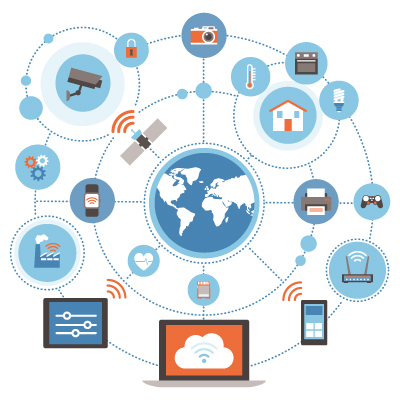IT is a crucial part of running a business, but it plays a deeper role than many realize. Today, we want to explore the relationship that businesses have with IT and, in particular, the effect technology has on company culture.
Common knowledge states that the more you put into something, the more you get out of it. Therefore, it stands to reason that you should put as much funding as possible into your most essential resources—such as your IT. This, however, can be a hard sell to yourself or anyone invested in your company… partners and staff included.
The Internet of Things, or IoT, has transformed how modern businesses operate in 2024. Whether you’re a manufacturer or a healthcare provider, the IoT offers previously impossible applications, from real-time data collection to smarter decision-making. Let’s explore some ways your business can use IoT in 2024.
Cyberattacks will not let up anytime soon, so businesses need to be prepared with the knowledge and expertise to combat them. Unfortunately, finding the right folks with the right expertise is hard. According to a report from Kaspersky titled “The Portrait of Modern Information Security Professional,” the world is short about 4 million security professionals, and even the existing professionals make grave errors in their first couple of years. Let’s take a look at some of these insights and see what we can learn from them.
Transferring data between computers and devices is now a routine activity. Let’s review the steps to ensure your data remains intact and your memory card stays in good condition before ejecting it from a computer.
Prior to the COVID-19 pandemic, business owners considered remote work a forbidden fruit. If employees got a taste, they would only want more of it. Nowadays, remote work is a bit more commonplace, no doubt as a result of the pandemic forcing most knowledge workers into some sort of remote work arrangement. How have companies adjusted to this new reality? Let’s look at the numbers.
You might have noticed the mobile technology around you, like smartphones, tablets, and wearables, getting noticeably stronger in recent years. As their strength increases, so too does their power expenditure, demanding more effective batteries and charging technologies as a result. Today, we want to look at the ever-fascinating topic of batteries for mobile technology and how innovations can help to fuel change in device design.
What would you do if you lost your smartphone? While some might do their best to keep their composure and work to find it, there’s no mistaking the amount of data stored on our favorite mobile devices. Today, we want to walk you through some strategies for finding your misplaced or stolen device.
Everyone should soon have access to a very handy feature in Google Sheets that helps close the gap between Sheets and its rival software, Microsoft Excel. This feature? Simple table conversions, complete with advanced organization features.
Password management can be challenging for both businesses and individuals, but it doesn’t have to be as difficult as it seems. With the increasing threat of cybersecurity attacks, relying on a single password is no longer sufficient. Instead, you need to use complex passwords stored in a password manager, which simplifies the process of remembering them.










